Open Doors Gallery is delighted to present a Q&A with OD artist Shane Wheatcroft
Shane Wheatcroft is an artist from Colchester in Essex, now based in Sittingbourne, Kent. For most of his career, he’s worked as a painter and screen printer, but in the last few years, Wheatcroft has focused exclusively on collage and assemblage. The source material for his collages comes from an increasingly large collection of vintage magazines, old books, stamps, and any interesting bits of paper ephemera the artist can find.
For artwork enquiries contact:
tom@opendoors.gallery
The discussion below is between Alexander Mourant & Shane Wheatcroft
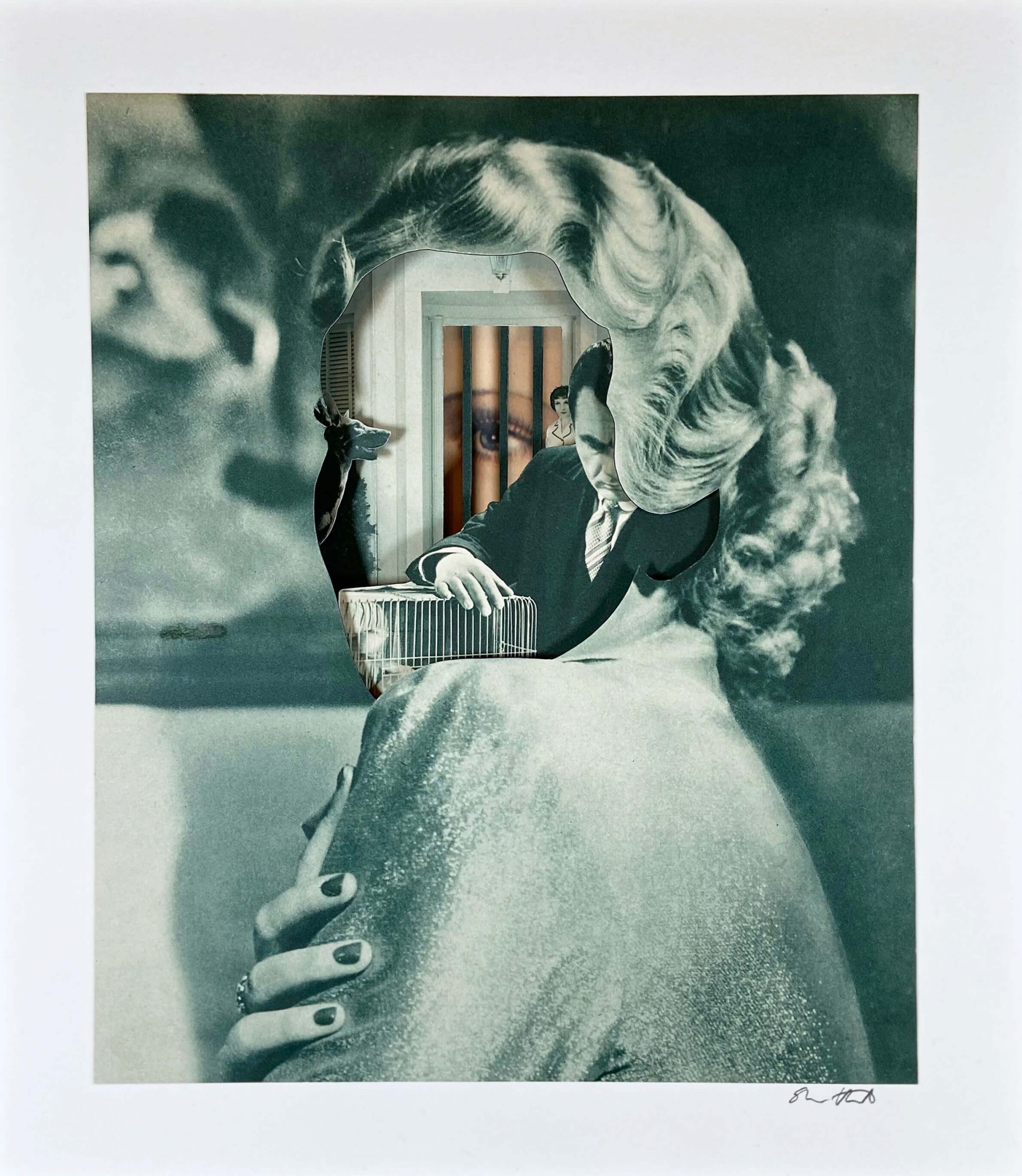
AM: We’d love to start with how your work has developed over the years. You began with painting and screen printing, and now find yourself working with found ephemera and collage, could you elaborate further on this progression?
SW: My paintings were very influenced by Pop Art, and screen printing was a natural progression from those really. Also, I’ve always been a huge Andy Warhol fan, and I wanted to properly understand how he created his canvases. Personally, I much prefer the process of screen printing over painting. There’s something incredibly addictive about pulling the squeegee and lifting the screen to find an image there.
My move into collage was really like an epiphany after seeing John Stezaker’s work a few years ago. I couldn’t believe the images he produced from just two juxtaposed photographs. After that, I collected as many old books, stamps, magazines, and general papery things I could lay my hands on and just experimented, until I found my own way of working.
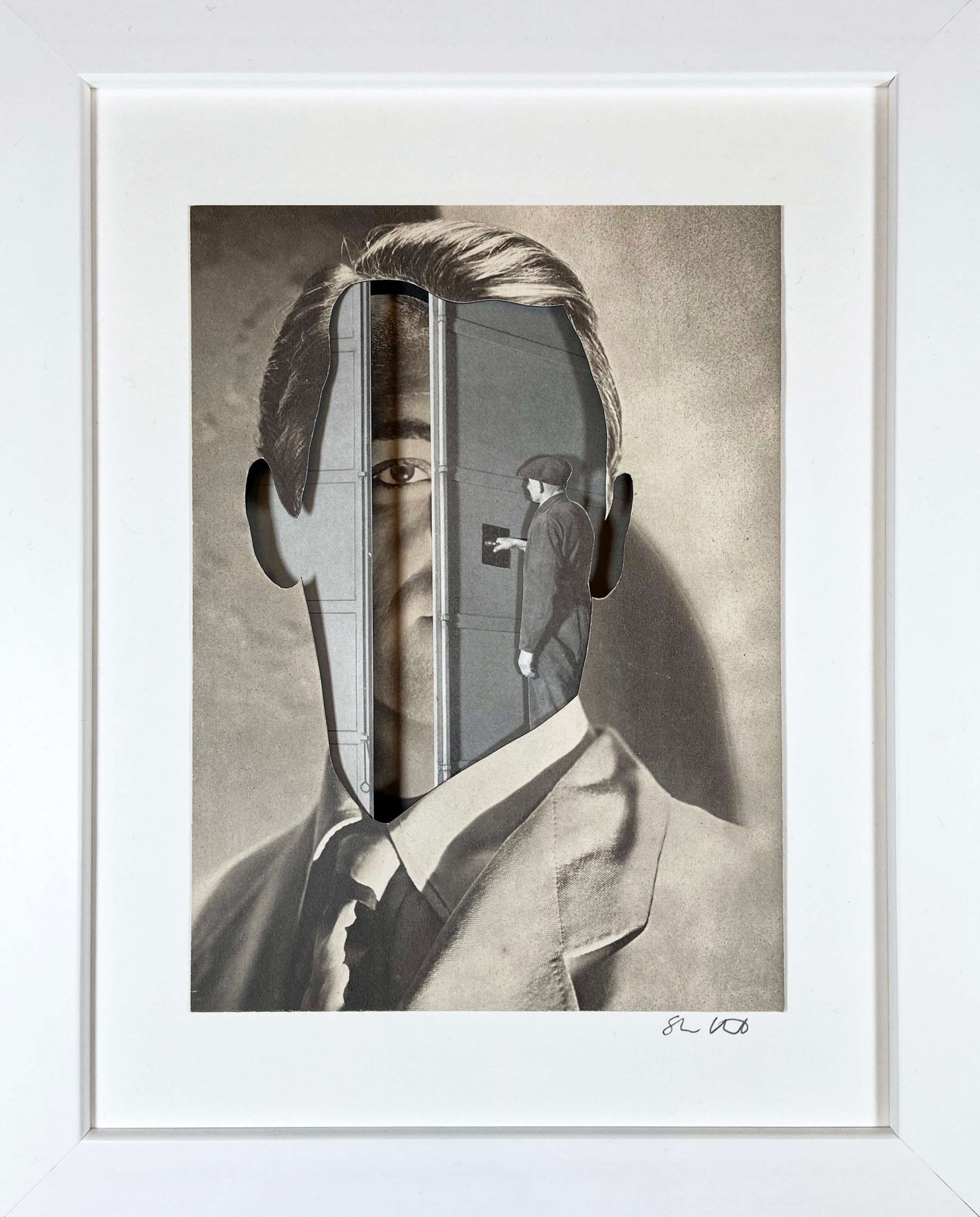
For those who are unfamiliar with the process of collage, could you explain your approach? Where do you find your materials, and how does a collage begin?
Every collage I make starts with a single image, and I’ll build the design, colour scheme and concept from that. It might be a portrait, or a picture of a bedroom or a tomato, or anything that I’m particularly drawn to, for whatever odd reason. The great thing about collage is that there is such a wealth of old material available in great condition for not much money, and anyone can do it.
I remember reading once that collage was popular as a medium for political art, in the early 20th century, because the materials are so cheap and accessible to everyone, and that’s why great artists such as John Heartfield and Hannah Hoch worked in the medium.
I’ve collected books and magazines from charity shops, antiques fairs, second hand bookshops and ebay. It’s also a brilliant form of recycling.
Why is it important to work with found images, rather than generating and collaging your own source material?
Personally, I’m terrible at making decisions, so limiting myself to only images that I’ve found and collected, gives me restrictions which I have to work within. A bit like Dogma films, I have a vague manifesto in my head.
I also love the colours and quality of printing from older publications. I tend to use materials from before about 1975. After that, printing became a bit too glossy for me.
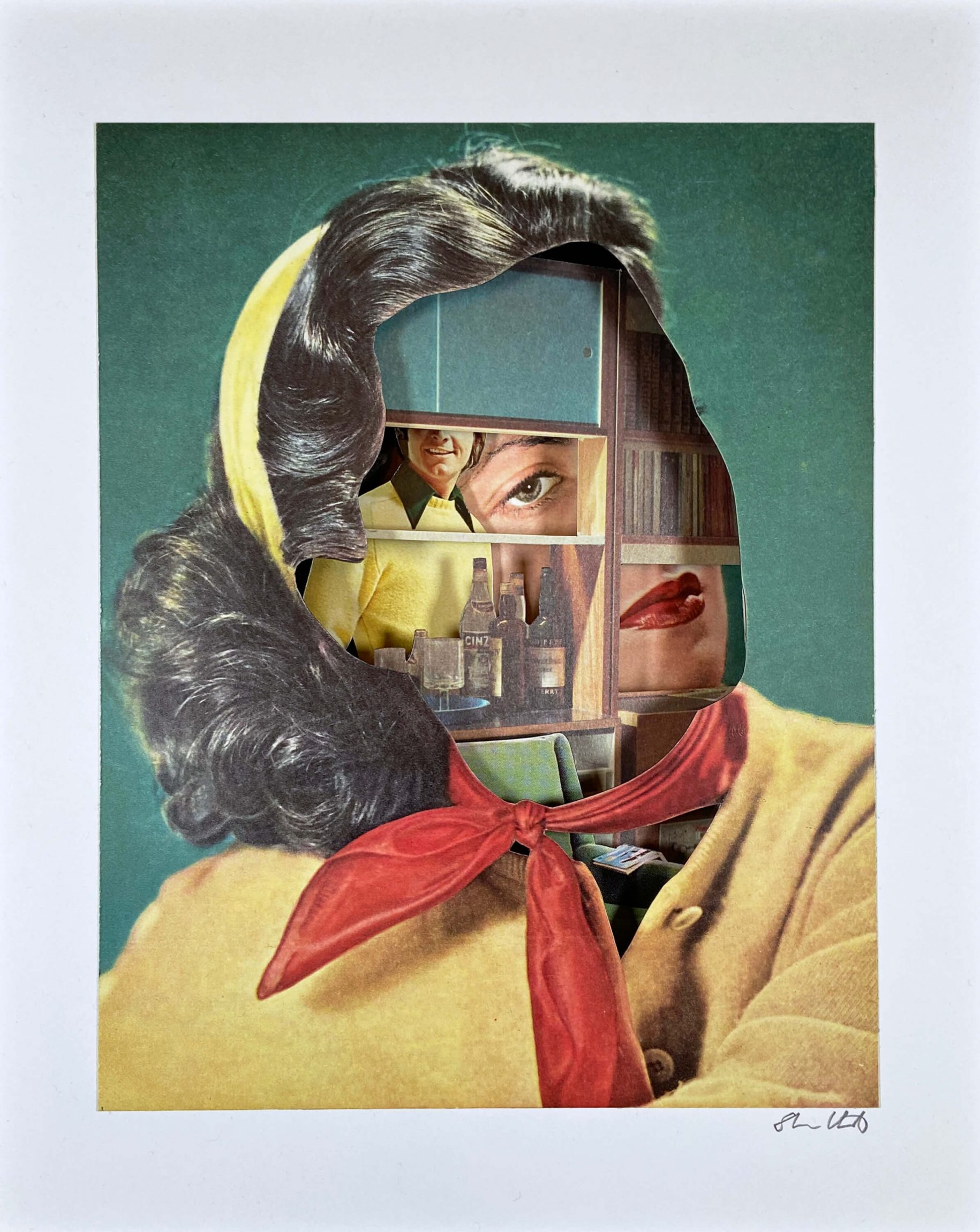
You hold a wide variety of artistic influences, who would you reference in regards to collage and the graphic quality of your work?
There are loads, but off the top of my head I’d say – Andy Warhol, John Stezaker, Peter Blake, Peter Saville (especially his work with Factory Records), Linder Sterling, Peter Kennard and Cindy Sherman (particularly the Untitled Film Stills series).
You primarily explore portraiture, with an albeit, shrouded and surreal nature. These works simultaneously conceal and reveal the identities of your ‘sitters’, and almost always include a menacing or seductive eye staring fixedly out towards us. Why are you drawn to the portrait as a subject, and what role do these characters play?
Portraits have always been a fascination for me as they’re such a huge part of art and photography, My take on portraits is to use the space within the face to create elements that the viewer can create a story from. The scene is really an insight into what the subject is thinking, experiencing or dreaming of at that moment. The eye motif is a way to connect the portrait subject to the scene. And obviously the eye has many meanings, especially as the window to the soul.
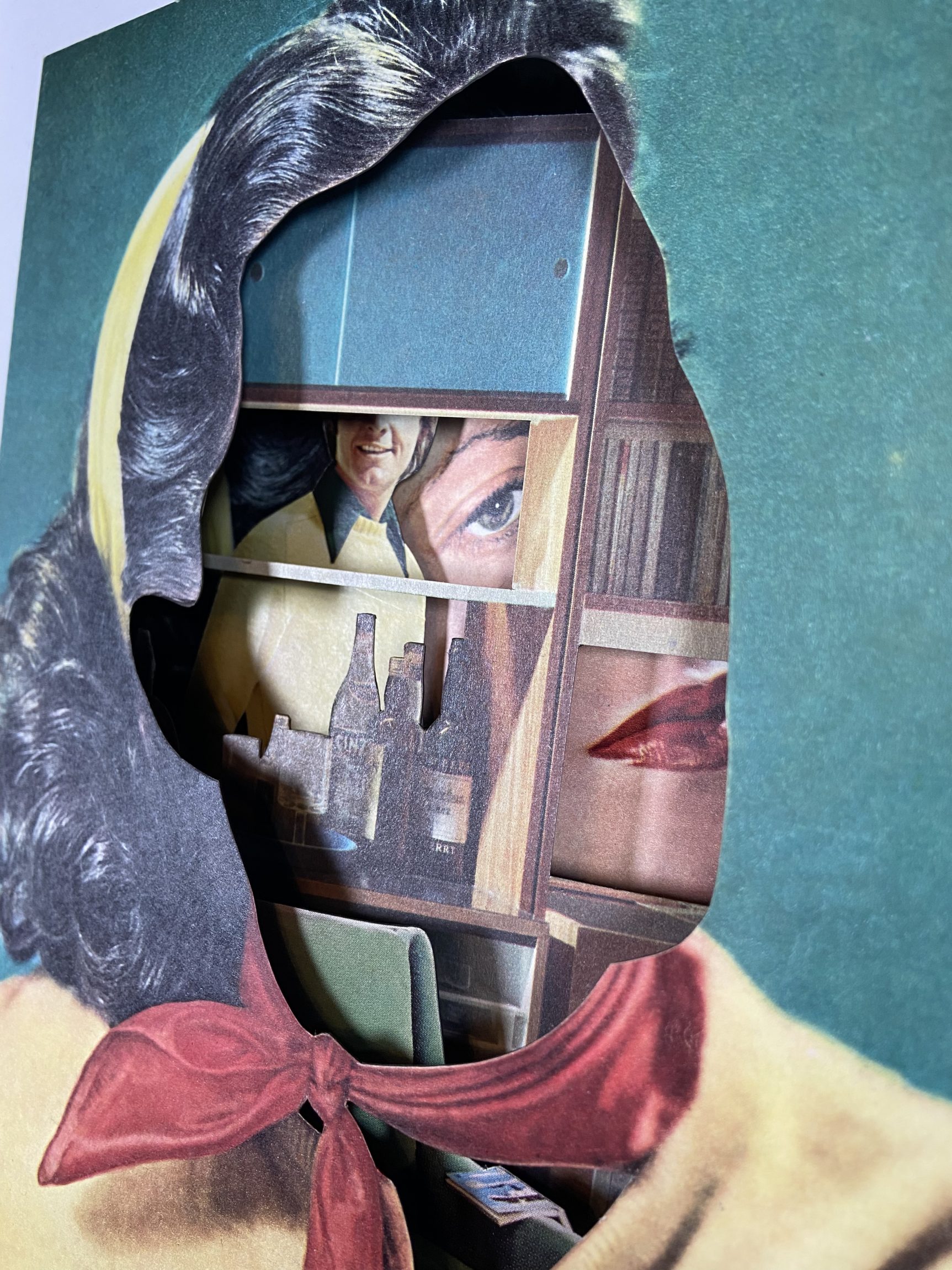
Uniquely you create both 2D and 3D collages, with the latter forming complex dioramas. These works in particular have an increased sense of depth, and lead us away from the inherent flatness of photography. Could you speak further on the construction and inclusion of dioramas in your practice?
The 3D collages started as an experiment, and I used LED lights, music and disco balls and all sorts of bits and bobs at first. For the work I’m doing now with the portraits, having a 3D element means I can hide characters and add more elements to the scene. They’re a bit like doing a jigsaw puzzle, but with lots of missing pieces.
What role does cinema play in the creation of your dioramas particularly? They seem so rich in narrative. Like memories you have pressed pause on.
From a practical point of view I collect cinema books and magazines for the dramatic action shots, and I’ll often find characters to use for my scenes in those. Cinema and TV generally are a huge influence on my work. Especially directors such as Mike Leigh, Derek Jarman and Ben Wheatley.
Would you ever consider creating larger dioramas perhaps? Is that restricted by the size of the source material you use or would that somehow affect the way we experience them do you think?
I have produced very large 3D collage pieces in the last few years, but with the series of portraits I’ve been working on I’m restricted to the size of the page I’ve taken the portrait from. I’ve recently been hunting for vintage movie posters so I can go much larger.
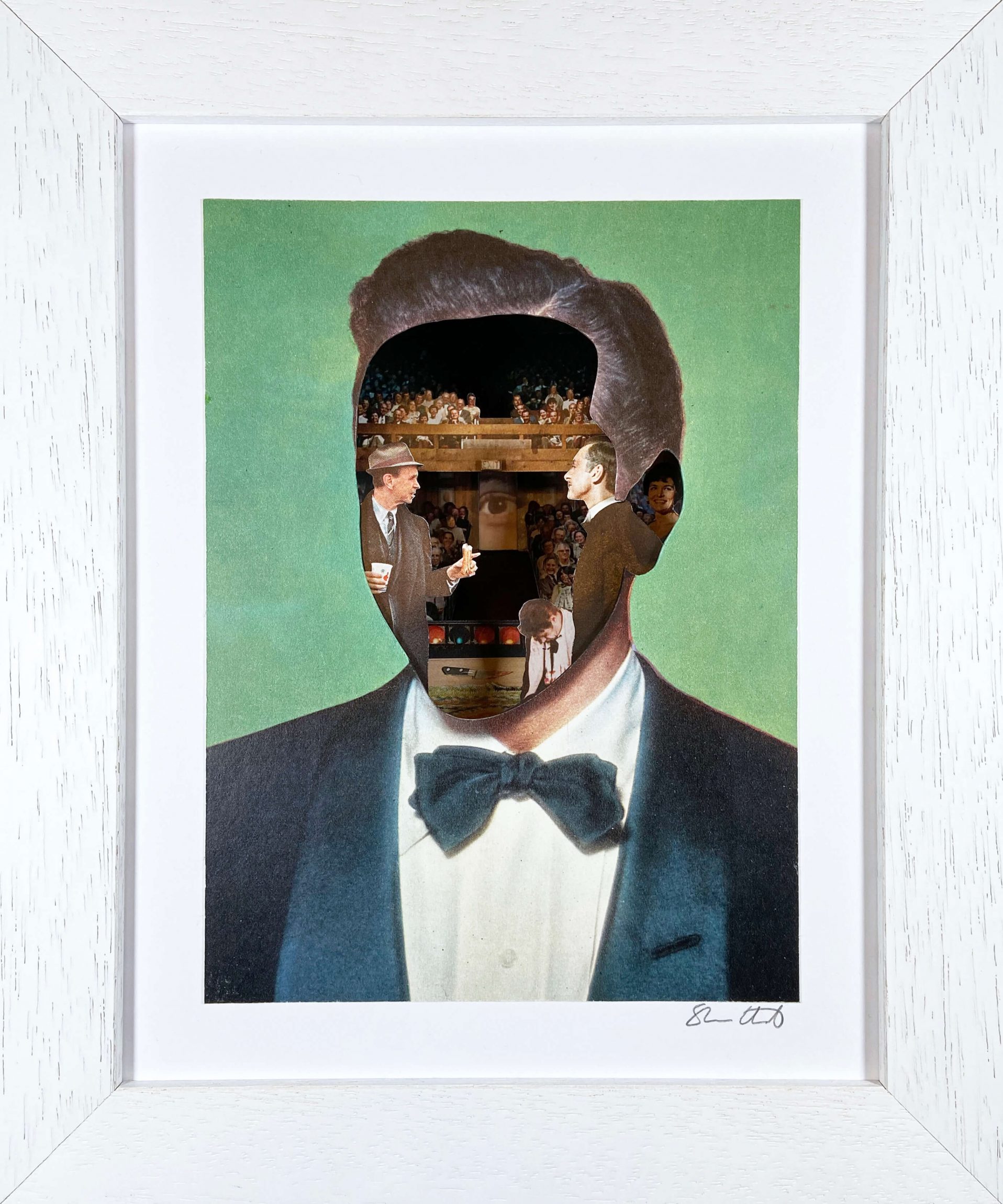
The diorama recurs as a device throughout art history, from Hiroshi Sugimoto’s large format photographs of natural history museums, to Joseph Cornell’s fantasy inducing worlds of travel, stars and maps. Whether employed as scientific investigation or pure magic, dioramas in art always seem to contain the curiosity and lived experiences of their makers. Are there any life experiences you’d like to share which can help us better understand your work and position as an artist?
I grew up in a modern housing estate in 1970/80’s Essex, with nothing but countryside for miles around, so I think that has had a big influence on my work. My work is usually rooted in real life, and making art has always been really important to me, especially during tough times, so a lot of my art is based on personal experiences. For some reason, juxtaposing the banality of real life with the glamour and pomp of the entertainment world has been constant theme in my work, I’m not really sure why.
Lastly, what’s next? What can we look forward to seeing in the future?
I’d like to make some larger and even more ridiculously complicated collages. The cost of living crisis and the ever widening wealth gap is definitely going have an influence on my work in future I think.
Interview conducted by Alexander Mourant
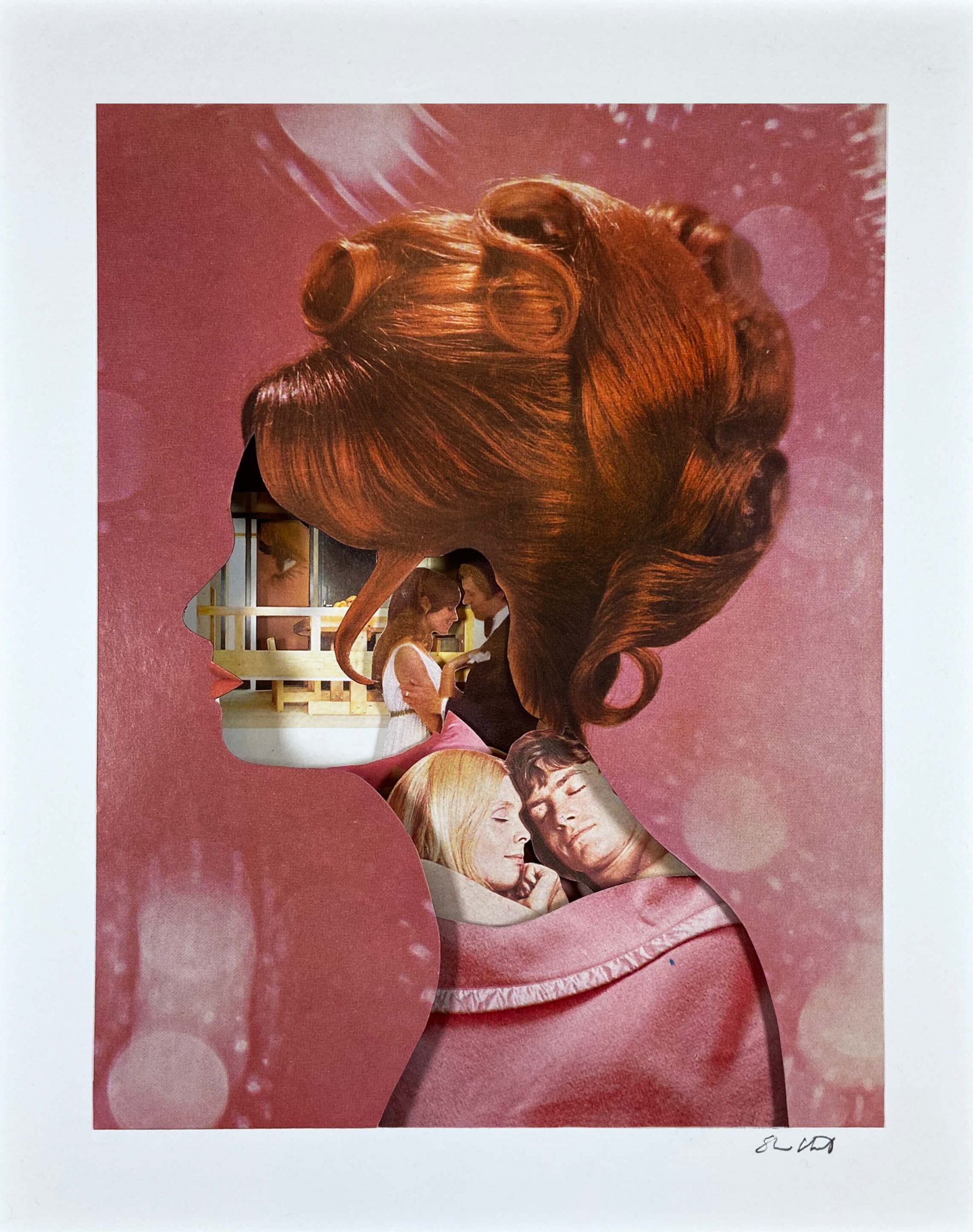
View Shane Wheatcroft’s artist page
For print enquiries contact:
tom@opendoors.gallery
